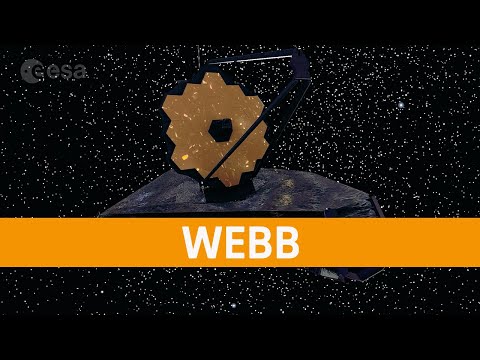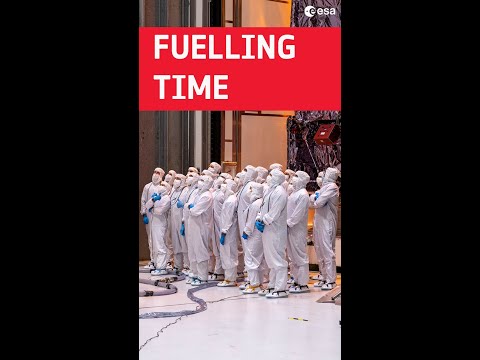Webb: A new view of the Universe
The world’s next generation cosmic observatory, the James Webb Space Telescope, is due for launch on an Ariane 5 from Europe’s Spaceport in French Guiana in late December.
Developed and constructed over more than 30 years, Webb is a remarkable feat of engineering and technology – with the largest astronomical mirror ever flown in space, sophisticated new scientific instruments, and a sunshield the size of a tennis court.
Webb is an international partnership between @NASA, ESA and the @Canadian Space Agency and will reveal the Universe in a whole new light. Optimised for infrared wavelengths, its detectors will be able to look back to shortly after the very dawn of time, revealing the formation of the first galaxies, as well as study stars and planets in our own Milky Way.
Find out more about Webb in ESA’s launch kit: https://bit.ly/ESAWebbToolKit
★ Subscribe: http://bit.ly/ESAsubscribe and click twice on the bell button to receive our notifications.
Check out our full video catalog: http://bit.ly/SpaceInVideos
Follow us on Twitter: http://bit.ly/ESAonTwitter
On Facebook: http://bit.ly/ESAonFacebook
On Instagram: http://bit.ly/ESAonInstagram
On LinkedIn: https://bit.ly/ESAonLinkedIn
On Pinterest: https://bit.ly/ESAonPinterest
On Flickr: http://bit.ly/ESAonFlickr
We are Europe’s gateway to space. Our mission is to shape the development of Europe’s space capability and ensure that investment in space continues to deliver benefits to the citizens of Europe and the world. Check out https://www.esa.int/ to get up to speed on everything space related.
Copyright information about our videos is available here: https://www.esa.int/ESA_Multimedia/Terms_and_Conditions
#ESA
#Webb
#WebbFliesAriane





It a mirage… as long as its on earth its still possible.
Great video !
It's at the launch site. That's progress.
JST will have trouble with the sunshade and it's micro shutters. Possibly with it's primary and secondary mirrors folding into place.
O my love ..❤️.. James Webb telescope 🔭
great.bravoo . me me me
Amazing
Благодоря этому видео ролику я понял, что надо учить иностраные языки
Show 👏👏👏👏👏👏🛰🛰🛰🛰🛰🛰
It's hard to believe everything will be going smoothly.
WE ARE GOING TO FIND OUR ANCESTORS SOON…WE ARE THEIR DESCENDANTS AND THEY LOOK EXACTLY LIKE US. 👽
10 billion dollars for this debacle meanwhile we have a dying world that needs to have that money spent on .
Interesting. 😊
Let's go JWST 🚀🚀🚀🌟
There are many flaws in this design. There are no adequate solar panels (2kw) and no batteries to operate all those motors, actuadores, sensors, transreceivers and energy needed to keep the Hydrazine and Dinitrogen tetroxide at its operating temperature. The quantity and the location of the boosters will not provide 3-axis maneuvering required for attitude and orbital positioning. The telescopic / hydraulic rods used to deploy the sun shields are the worst design since they are vulnerable to vibration, stress and more importantly to extreme temperature variations. It seems that this satellite, just like all other satellites, will be mounted on a platform hanging from a high altitude balloon that supplies the power needed for its operation. As you saw in the videos, the builders are able to lift the 6+ tons satellite by holding it to its one side, which means this is not a design for weightless structure, but is a design to hold the satellite by its mounting bracket.